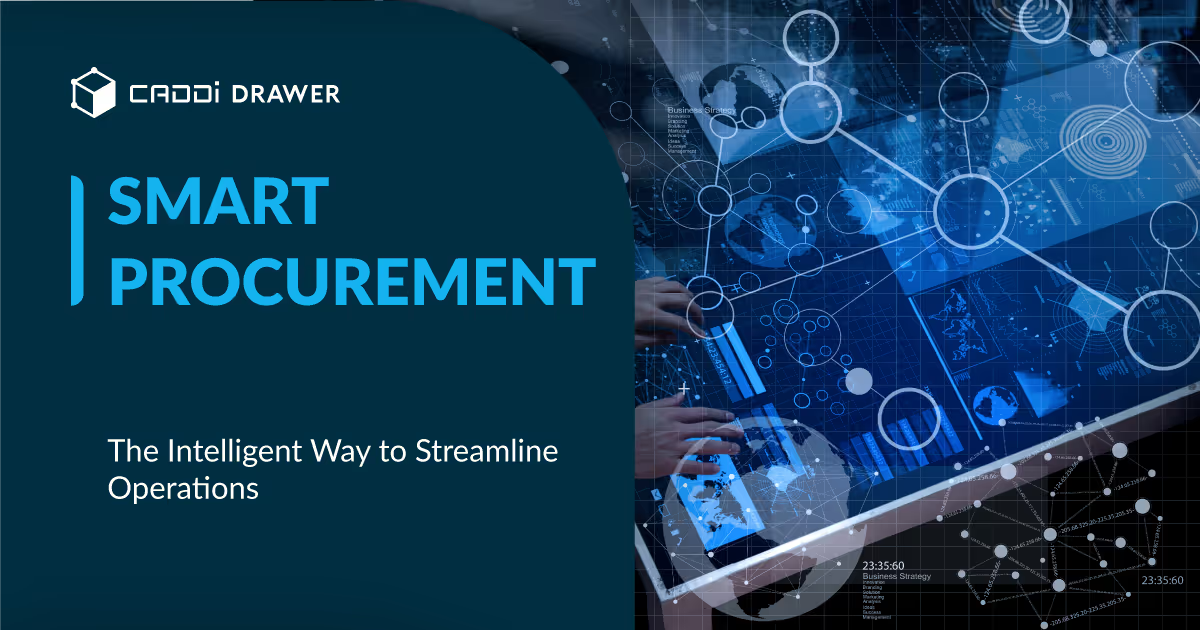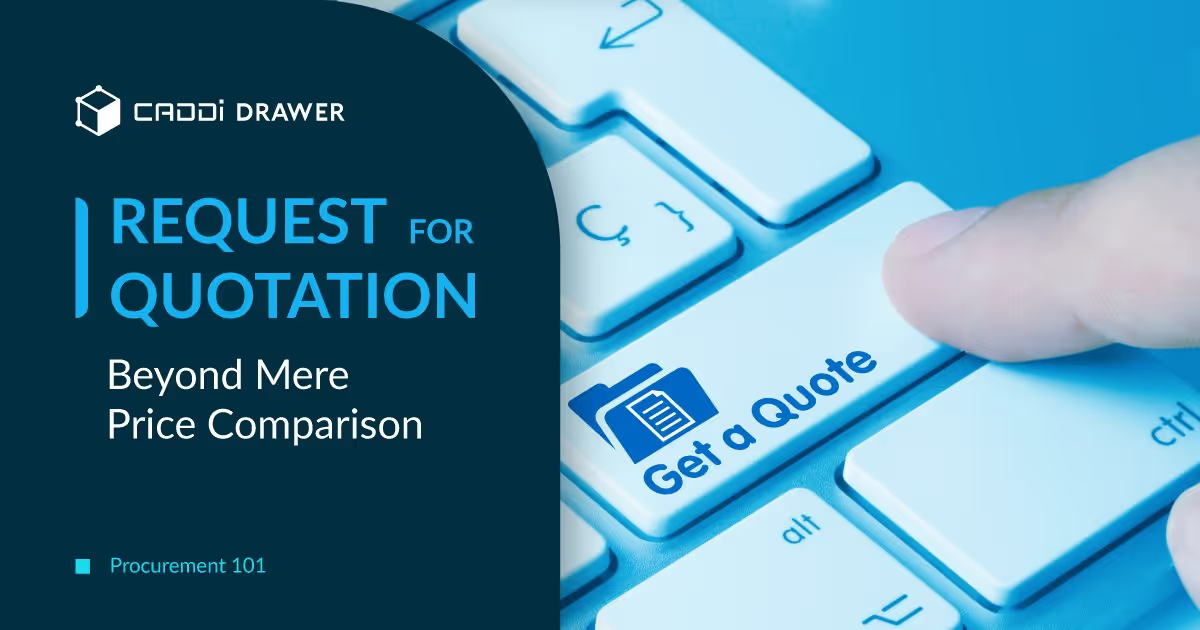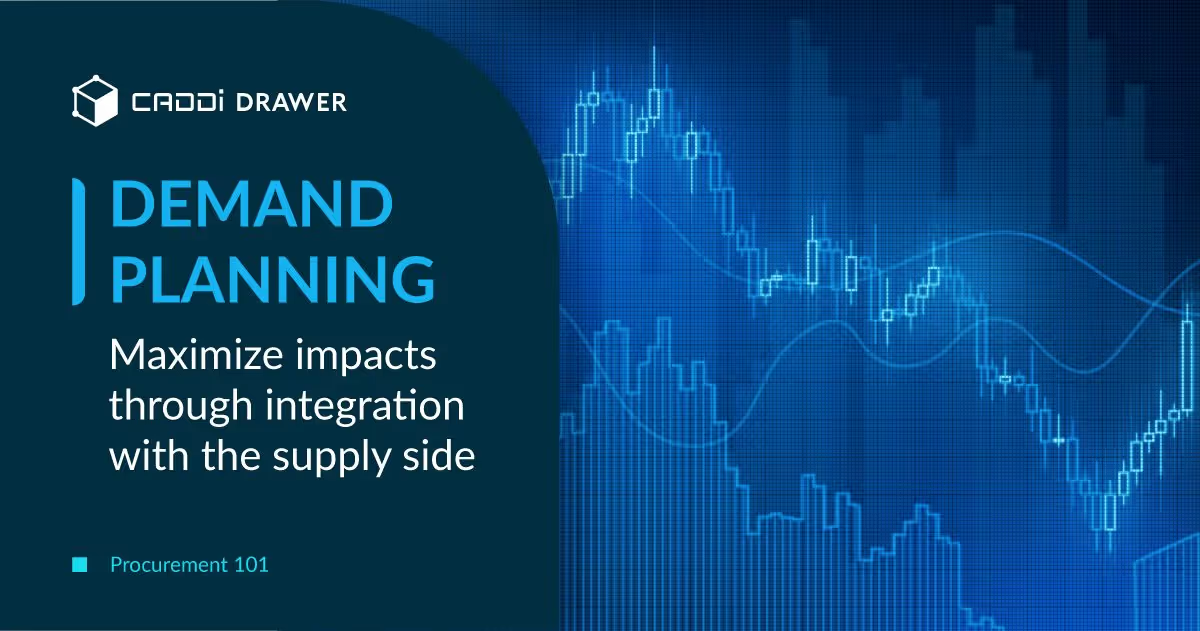Smart Procurement: The Intelligent Way to Streamline Operations

Table of Contents

What is Smart Procurement?
Smart procurement is the process of leveraging technology and data to drive efficiency and value across an organization’s purchasing activities. It represents a digital transformation in how companies research, source, negotiate, purchase, receive and manage goods and services. Smart procurement delivers major benefits compared to traditional manual procurement methods.
Firstly, smart procurement enhances efficiency through process automation and digitization. Online procurement portals, e-procurement software, electronic catalogs, and system integrations streamline everything from purchase requisitions to invoice approvals. This removes paperwork and manual work, speeds up cycle times, and enables employees to focus on more strategic tasks.
Secondly, smart procurement improves data intelligence. Digital tools provide access to spent data analytics, supplier reports, and market intelligence. Stakeholders gain real-time visibility into budgets, trends, performance metrics, and more. This data can drive evidence-based decision making on opportunities like consolidation initiatives or competitive bidding events.
Finally, smart procurement allows for value creation such as cost savings, risk reduction, and supplier innovation. Data insights uncover negotiating leverage and sourcing opportunities. Technologies like online auctions facilitate competitive bidding. Overall, smart procurement evolves procurement’s strategic role from just cost cutting to value creation across the organization.
Digital Transformation in Procurement
The procurement function is undergoing a digital transformation. Organizations are adopting digital tools, automation, analytics, and cloud-based systems to modernize procurement operations.
A key goal of digital transformation in procurement is leveraging data and technology to improve efficiency, transparency, and decision making. Organizations are implementing e-procurement systems, supplier portals, and cloud-based ERP systems to manage the source-to-pay process digitally.
Procurement intelligence enables data-driven decision making in procurement. Predictive analytics and spend analysis tools provide insights into spending patterns, risks, and opportunities for cost savings. By leveraging big data, procurement teams can identify the best suppliers and prices when sourcing.
Automation streamlines repetitive, manual tasks in the procure-to-pay process. Technologies like RPA can extract data, process invoices, update records, and complete transactions automatically. This improves accuracy and frees up procurement staff to focus on value-added activities.
The digital tools adopted in procurement generate valuable data. Organizations are utilizing this data to gain visibility into spend, supply chain operations, and supplier relationships. Digital dashboards make it easy to monitor KPIs and metrics.
Transitioning to an integrated, digital procurement function enables organizations to be more agile, efficient, and data-driven. The use of emerging technologies like AI and advanced analytics will continue shaping the future of smart procurement.
Data-Driven Sourcing
Strategic sourcing has evolved from an art to a science with the introduction of data analytics. By leveraging vast amounts of internal procurement data as well as engineering and manufacturing data, organizations can employ sophisticated analysis to derive actionable insights that optimize procurement processes.
Data-driven sourcing provides full visibility into spend and suppliers, enabling businesses to identify opportunities for significant cost savings. By analyzing historical buying patterns and pricing data, procurement teams can pinpoint overspending and negotiate better contracts with suppliers. Data analytics also facilitates comparison of supplier performance on parameters like quality, delivery time and total cost, ensuring that businesses maximize value in supplier relationships.
With real-time market intelligence and benchmarking, enterprises can adopt dynamic and flexible sourcing strategies aligned with external market forces. Data-driven insights allow buyers to identify optimal inventory levels, foresee changes in demand, adapt procurement plans and avoid maverick spending. This leads to overall efficiencies and cost reductions across the complete procurement lifecycle.
Advanced analytics fosters collaborative and strategic supplier relationships. By providing suppliers with actionable insights derived from data analysis, buyers can enable joint value creation and innovation. Data transparency enhances supplier management and streamlines procure-to-pay processes for a lean and agile supply chain.
Supply Chain Visibility
Supply chain visibility is a critical component of smart procurement. It provides purchasers with real-time tracking of orders and shipments across the entire supply chain. This enables organizations to have far greater oversight of supplier performance and identify potential bottlenecks or issues proactively.
With supply chain visibility tools and technologies, procurement teams gain valuable insights such as:
- Real-time location tracking of orders in transit
- Up-to-date ETAs on upcoming deliveries
- Live reporting on supplier KPIs like quality, lead times, and production capacity
- Early notifications of potential delays or disruptions
By leveraging supply chain visibility, purchasers can collaborate more effectively with suppliers. They can address problems quickly before they impact delivery schedules. This proactive risk management ensures continuity of supply and prevents costly delays.
Overall, enhanced visibility across the supply chain is integral for smart procurement. It empowers purchasers to optimize ordering and inventory levels, minimize disruptions, and improve on-time delivery performance. This strengthens relationships with suppliers and provides the agility to thrive in today’s dynamic markets.
Supplier Relationship Management
Collaboration is key to building strong relationships with suppliers in today’s digital procurement landscape. Effective supplier management involves leveraging digital platforms and advanced AI technologies to foster much more frequent, transparent and meaningful engagement with suppliers.
This two-way communication facilitates:
- Better alignment on goals, timelines and capabilities
- Earlier identification of potential risks or issues
- Joint innovation and problem-solving
- Streamlined supplier development and supplier onboarding
In addition, digital tools provide analytics on supplier performance, enabling fact-based collaboration. Both parties can access the same data to have objective, productive discussions on improvements and opportunities. This data-driven approach also informs strategic decisions around supplier consolidation.
The aim is to cultivate win-win partnerships built on trust and transparency. Through proactive supplier development, suppliers become valued extensions of the buying organization rather than vendors to be squeezed. This enables both sides to thrive in the long run.
With improved supplier collaboration, buying organizations can expect benefits such as:
- Higher quality products and services
- Shorter lead times and better on-time delivery
- More flexibility to respond to changes in demand
- Lower costs through joint process improvements
- Optimized supply base through thoughtful supplier consolidation
The key is to see suppliers as partners rather than adversaries. By embracing collaboration through digital platforms, procurement can foster synergistic relationships that drive value for all parties.
Risk Management
Supply chains face many potential disruptions, such as natural disasters, geopolitical changes, cyberattacks, and more. Smart procurement emphasizes proactive risk management to build resilient supply chains. This involves thoroughly assessing risks across the supply network to identify vulnerabilities. Steps for effective risk management include:
- Risk identification – Map the supply chain end-to-end, including tier 1, 2, and beyond. Assess risks at each stage, considering probability and potential impact. Look for single points of failure.
- Scenario planning – Develop scenarios for high priority risks to game out potential outcomes and responses. Estimate financial, operational, and reputational impacts under each scenario.
- Contingency strategies – Based on risk priorities and scenarios, define contingency plans to mitigate disruptions. This may involve increasing inventory buffers, securing secondary suppliers, regionalizing supply bases, or other resilience tactics. Update response playbooks continuously.
- Monitoring and simulation – Actively monitor for early warning signals. Run simulations to test contingency plans. Learn from past disruptions to continually improve risk management capabilities.
With rigorous risk management, procurement teams can rapidly detect disruptions, respond decisively, and safeguard supply chain continuity even amidst turbulence. This protects revenue, margins, and customer service levels.
The Future of Smart Procurement
Smart procurement is poised to become even more advanced in the coming years as organizations continue to adopt emerging technologies and expand the strategic role of procurement teams. Here are some key trends we will likely see:
Continued Adoption of Emerging Technologies:
Organizations will accelerate their adoption of AI, machine learning, and other innovations to automate more procurement processes and gain greater insights from data. This will enable more predictive analytics to mitigate risks and identify cost savings opportunities. Procurement teams will become more nimble and forward-thinking.
Focus on Value Creation:
There will be a shift away from a sole focus on cutting costs towards maximizing value creation. While cost control remains important, procurement leaders will be expected to identify opportunities to spur innovation, unlock new revenue streams, enhance brand reputation through sustainability initiatives, and more. Unlocking additional forms of value will become a key priority.
Procurement’s Strategic Role:
With their vast understanding of markets, suppliers, costs and risks, procurement professionals will play an increasingly strategic role in overall business success. They will evolve from order placers to trusted advisors with a seat at the executive table. Leading organizations will empower procurement to weigh in on new products, M&A deals, expansion plans and more. Procurement’s stature will rise.
By embracing technology, focusing on value and playing a strategic role, the procurement function will deliver even greater impact in the coming years as smart procurement principles become standard practice. This transformation promises to both strengthen operations and boost competitiveness across industries.
What is Smart Procurement?
Smart procurement is the process of leveraging technology and data to drive efficiency and value across an organization’s purchasing activities. It represents a digital transformation in how companies research, source, negotiate, purchase, receive and manage goods and services. Smart procurement delivers major benefits compared to traditional manual procurement methods.
Firstly, smart procurement enhances efficiency through process automation and digitization. Online procurement portals, e-procurement software, electronic catalogs, and system integrations streamline everything from purchase requisitions to invoice approvals. This removes paperwork and manual work, speeds up cycle times, and enables employees to focus on more strategic tasks.
Secondly, smart procurement improves data intelligence. Digital tools provide access to spent data analytics, supplier reports, and market intelligence. Stakeholders gain real-time visibility into budgets, trends, performance metrics, and more. This data can drive evidence-based decision making on opportunities like consolidation initiatives or competitive bidding events.
Finally, smart procurement allows for value creation such as cost savings, risk reduction, and supplier innovation. Data insights uncover negotiating leverage and sourcing opportunities. Technologies like online auctions facilitate competitive bidding. Overall, smart procurement evolves procurement’s strategic role from just cost cutting to value creation across the organization.
Digital Transformation in Procurement
The procurement function is undergoing a digital transformation. Organizations are adopting digital tools, automation, analytics, and cloud-based systems to modernize procurement operations.
A key goal of digital transformation in procurement is leveraging data and technology to improve efficiency, transparency, and decision making. Organizations are implementing e-procurement systems, supplier portals, and cloud-based ERP systems to manage the source-to-pay process digitally.
Procurement intelligence enables data-driven decision making in procurement. Predictive analytics and spend analysis tools provide insights into spending patterns, risks, and opportunities for cost savings. By leveraging big data, procurement teams can identify the best suppliers and prices when sourcing.
Automation streamlines repetitive, manual tasks in the procure-to-pay process. Technologies like RPA can extract data, process invoices, update records, and complete transactions automatically. This improves accuracy and frees up procurement staff to focus on value-added activities.
The digital tools adopted in procurement generate valuable data. Organizations are utilizing this data to gain visibility into spend, supply chain operations, and supplier relationships. Digital dashboards make it easy to monitor KPIs and metrics.
Transitioning to an integrated, digital procurement function enables organizations to be more agile, efficient, and data-driven. The use of emerging technologies like AI and advanced analytics will continue shaping the future of smart procurement.
Data-Driven Sourcing
Strategic sourcing has evolved from an art to a science with the introduction of data analytics. By leveraging vast amounts of internal procurement data as well as engineering and manufacturing data, organizations can employ sophisticated analysis to derive actionable insights that optimize procurement processes.
Data-driven sourcing provides full visibility into spend and suppliers, enabling businesses to identify opportunities for significant cost savings. By analyzing historical buying patterns and pricing data, procurement teams can pinpoint overspending and negotiate better contracts with suppliers. Data analytics also facilitates comparison of supplier performance on parameters like quality, delivery time and total cost, ensuring that businesses maximize value in supplier relationships.
With real-time market intelligence and benchmarking, enterprises can adopt dynamic and flexible sourcing strategies aligned with external market forces. Data-driven insights allow buyers to identify optimal inventory levels, foresee changes in demand, adapt procurement plans and avoid maverick spending. This leads to overall efficiencies and cost reductions across the complete procurement lifecycle.
Advanced analytics fosters collaborative and strategic supplier relationships. By providing suppliers with actionable insights derived from data analysis, buyers can enable joint value creation and innovation. Data transparency enhances supplier management and streamlines procure-to-pay processes for a lean and agile supply chain.
Supply Chain Visibility
Supply chain visibility is a critical component of smart procurement. It provides purchasers with real-time tracking of orders and shipments across the entire supply chain. This enables organizations to have far greater oversight of supplier performance and identify potential bottlenecks or issues proactively.
With supply chain visibility tools and technologies, procurement teams gain valuable insights such as:
- Real-time location tracking of orders in transit
- Up-to-date ETAs on upcoming deliveries
- Live reporting on supplier KPIs like quality, lead times, and production capacity
- Early notifications of potential delays or disruptions
By leveraging supply chain visibility, purchasers can collaborate more effectively with suppliers. They can address problems quickly before they impact delivery schedules. This proactive risk management ensures continuity of supply and prevents costly delays.
Overall, enhanced visibility across the supply chain is integral for smart procurement. It empowers purchasers to optimize ordering and inventory levels, minimize disruptions, and improve on-time delivery performance. This strengthens relationships with suppliers and provides the agility to thrive in today’s dynamic markets.
Supplier Relationship Management
Collaboration is key to building strong relationships with suppliers in today’s digital procurement landscape. Effective supplier management involves leveraging digital platforms and advanced AI technologies to foster much more frequent, transparent and meaningful engagement with suppliers.
This two-way communication facilitates:
- Better alignment on goals, timelines and capabilities
- Earlier identification of potential risks or issues
- Joint innovation and problem-solving
- Streamlined supplier development and supplier onboarding
In addition, digital tools provide analytics on supplier performance, enabling fact-based collaboration. Both parties can access the same data to have objective, productive discussions on improvements and opportunities. This data-driven approach also informs strategic decisions around supplier consolidation.
The aim is to cultivate win-win partnerships built on trust and transparency. Through proactive supplier development, suppliers become valued extensions of the buying organization rather than vendors to be squeezed. This enables both sides to thrive in the long run.
With improved supplier collaboration, buying organizations can expect benefits such as:
- Higher quality products and services
- Shorter lead times and better on-time delivery
- More flexibility to respond to changes in demand
- Lower costs through joint process improvements
- Optimized supply base through thoughtful supplier consolidation
The key is to see suppliers as partners rather than adversaries. By embracing collaboration through digital platforms, procurement can foster synergistic relationships that drive value for all parties.
Risk Management
Supply chains face many potential disruptions, such as natural disasters, geopolitical changes, cyberattacks, and more. Smart procurement emphasizes proactive risk management to build resilient supply chains. This involves thoroughly assessing risks across the supply network to identify vulnerabilities. Steps for effective risk management include:
- Risk identification – Map the supply chain end-to-end, including tier 1, 2, and beyond. Assess risks at each stage, considering probability and potential impact. Look for single points of failure.
- Scenario planning – Develop scenarios for high priority risks to game out potential outcomes and responses. Estimate financial, operational, and reputational impacts under each scenario.
- Contingency strategies – Based on risk priorities and scenarios, define contingency plans to mitigate disruptions. This may involve increasing inventory buffers, securing secondary suppliers, regionalizing supply bases, or other resilience tactics. Update response playbooks continuously.
- Monitoring and simulation – Actively monitor for early warning signals. Run simulations to test contingency plans. Learn from past disruptions to continually improve risk management capabilities.
With rigorous risk management, procurement teams can rapidly detect disruptions, respond decisively, and safeguard supply chain continuity even amidst turbulence. This protects revenue, margins, and customer service levels.
The Future of Smart Procurement
Smart procurement is poised to become even more advanced in the coming years as organizations continue to adopt emerging technologies and expand the strategic role of procurement teams. Here are some key trends we will likely see:
Continued Adoption of Emerging Technologies:
Organizations will accelerate their adoption of AI, machine learning, and other innovations to automate more procurement processes and gain greater insights from data. This will enable more predictive analytics to mitigate risks and identify cost savings opportunities. Procurement teams will become more nimble and forward-thinking.
Focus on Value Creation:
There will be a shift away from a sole focus on cutting costs towards maximizing value creation. While cost control remains important, procurement leaders will be expected to identify opportunities to spur innovation, unlock new revenue streams, enhance brand reputation through sustainability initiatives, and more. Unlocking additional forms of value will become a key priority.
Procurement’s Strategic Role:
With their vast understanding of markets, suppliers, costs and risks, procurement professionals will play an increasingly strategic role in overall business success. They will evolve from order placers to trusted advisors with a seat at the executive table. Leading organizations will empower procurement to weigh in on new products, M&A deals, expansion plans and more. Procurement’s stature will rise.
By embracing technology, focusing on value and playing a strategic role, the procurement function will deliver even greater impact in the coming years as smart procurement principles become standard practice. This transformation promises to both strengthen operations and boost competitiveness across industries.
Ready to see CADDi Drawer in action? Get a personalized demo.
Subscribe to our Blog!
Related Resources












.svg)



.svg)
.svg)
.svg)


